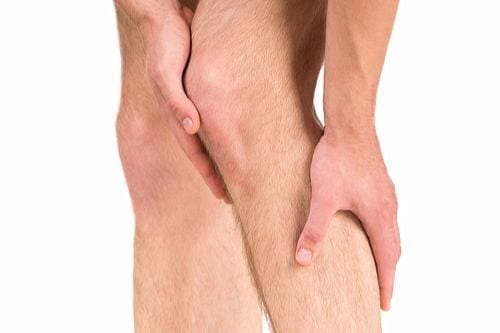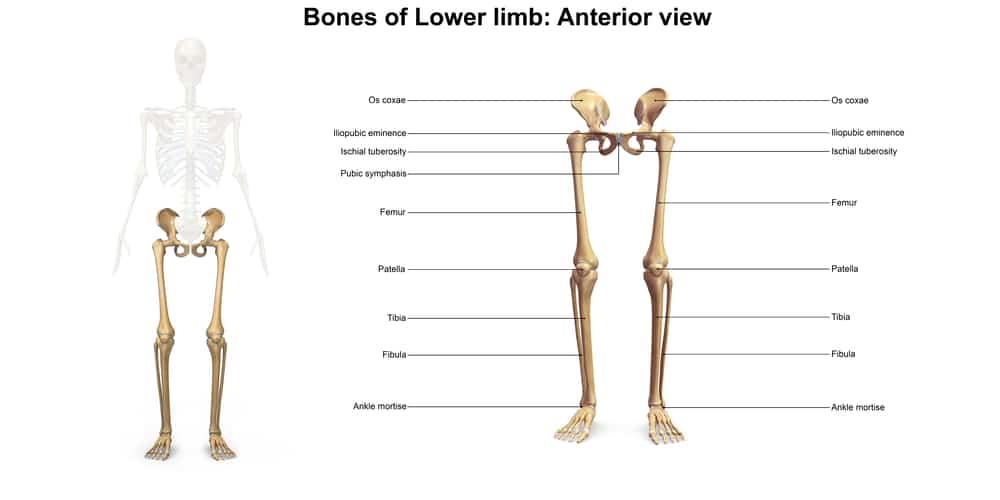
If you have sustained a leg injury after a car accident, read on for common leg injuries and some tips about your personal injury claim. The Bishop Law Firm represents car accident victims in North Carolina and we do not get paid unless you win.
This article is not offered as medical advice on car accident injuries. If you have sustained leg injuries in a car accident, please seek immediate medical attention for your car accident leg injury.
We offer free case reviews for North Carolina car accident victims. Call us today, 919-615-3095, for your free case review or start online now.
North Carolina Car Accident Laws
If you have car accident leg injuries, you may be able to recover your losses in North Carolina from the at-fault party's insurance company if the car accident was not your fault.
North Carolina is one of the four (Alabama, Maryland and Virginia) remaining contributory negligence states. This means that the victim must not be at fault in order to recover for their car accident injuries.
How is fault determined in a car accident in North Carolina? After a car wreck, the police officer will usually cite the at-fault party and put a description of the accident on the bottom of the 2nd page of the accident report. If law enforcement does not cite the at-fault party, the description of the incident can be used to determine fault.
But without a clear description of events, the insurance adjuster may deny that their insured is at fault or allege that the victim is contributorily negligent.
Contributory negligence often results in unfair outcomes for victims but is the law in our state. One exception to contributory negligence is the "last clear change doctrine". The last clear chance doctrine can help victims if the at-fault party had the last opportunity to change course and avoid the injury. This very rarely helps a victim.
If you have been injured in a car accident through no fault of your own, you can recover the costs of your missed time from work, medical expenses, and be compensated for your pain and suffering. Future medical bills and lost wages should also be included if warranted.
Punitive damages can also be awarded to punish the at-fault party for egregiously wrongful acts (rare). Drunk drivers who harm others while behind the wheel may be liable for punitive damages. However, simply causing an accident due to distracted driving may not rise to the level of "egregiously wrongful."
How long after a car accident can you sue in North Carolina? NC has a three year statute of limitations from the date of injury. If your loved one was killed in the car accident, you have two years from the date of death to bring suit.
If you were injured while at work in a motor vehicle accident, you could have an NC Workers' Compensation case as well as a car accident claim.
What about car accidents involving self-driving cars or sudden emergency?
Common Leg Injuries After Car Accidents
Skin Injury
Skin Injury (soft tissue injuries) - can be shallow or to the bone. If the cut is to the bone, the leg injury will take longer to heal. Depending on where the laceration is it may cause severe pain and affect your ability to walk, sit and stand. Sutures may be required and nerve damage is possible. There is always the chance of infection and scarring. Proper wound care is imperative.
Bruising is a common injury among car accident victims. However, medical treatment should be sought to confirm the bruise is superficial and not a more serious injury (see discussion on Deep Vein Thrombosis below). For more read our article: Skin Injury After A Car Accident.
Muscles, Ligaments or Tendon Strain and Tear
Muscles, Ligaments, or Tendons Strain or Tear cause leg pain, swelling and even the inability to use the muscle. Usually, a physical examination by a doctor can be enough to diagnose a muscle strain or tear. You may need crutches or braces to demobilize the area and give it time to heal. P.R.I.C.E. and NSAIDS are often recommended by doctors (Via WebMD)to help with the muscle spasms and shooting pain.
Dislocated Hips and Leg Bones
Dislocation happens when a bone comes out of its joint. The damage or deformity may or may not be visibly apparent but the intense pain and inability to move is undeniable. Leg injuries from car accidents are the most common cause of hip dislocations. The knee can dislocate when the femur and tibia (shin bone) no longer meet at the knee joint
An x-ray and MRI are usually given to determine the extent of the bone dislocation and the damage to the surrounding soft tissue. Reduction, immobilization, surgery and rehabilitation are all treatment options that an orthopedist may recommend (Via Cleveland Clinic).
Reduction - A reduction of a broken bone or dislocated joint refers to "reducing the gap between the fracture fragments or the gap between the two bones of a joint" (via Dr. Yu). The form of reduction used depends on the part of the body that is dislocated. Anterior Hip dislocation is commonly reduced by inline traction and external relocation (NIH) while posterior hip locations are reduced by placing longitudinal traction with internal rotation on the hip.
Immobilization - While having any body part in a sling, brace or boot can be annoying, immobilization of the upper or lower leg is going to affect your ability to walk, stand and sit. An injured victim is going to miss work and have problems completing activities of daily living. Immobilization allows the injured body part to rest and heal.
Surgery - After a dislocation, surgery may be necessary to repair torn or stretched tendons or ligaments (Via NYU). Surgery may also be needed if bones are broken and need to be set back into place (see below on broken bones).
Rehabilitation - Physical therapy, aquatic therapy and home exercises are all possible rehabilitation options for leg injuries that involve dislocations.
Broken Bones
Broken Bones - The legs contain the longest bones in the human body: femur, tibia and fibula. Broken bones can snap into two clean pieces or shatter completely (comminuted). The bone may or may not stick out of the skin (open). The more complicated the leg fracture is, the more time it will take to heal. Crush injuries are among the worst bone fractures. A broken femur means the loss of stability from the largest and strongest bone in the body.
X-rays are usually used to diagnose a broken bone but stress fractures are more difficult to diagnose (Via WebMD). Treatment begins the same as discussed above for dislocation, then a splint, pins, wires or rods and a cast are used to hold the bones stationary while they heal. At the minimum, 6-8 weeks will be needed for you to heal.
Broken Hip Bones
Broken Hip Bones - Hip fractures occur at the upper end of the femur. In my practice, hip and femur fractures seem to be the worst and most troublesome. The pelvis plays a great part in the balance and movement of your body. Once damaged, the body takes substantial time to heal. Depending on the type of break, surgery can involve screws, plates and even total hip replacement (Via OrthoInfo).
Deep Vein Thrombosis
Deep Vein Thrombosis - in simple terms, a blood clot that is located deep in your body. Injury from trauma to your leg during an accident or the surgery required to repair your injuries may both cause damage to your blood vessels. Pulmonary embolisms are a complication of a DVT. If you have unexplained pain, swelling or discoloration, you should seek medical attention (Via HealthLine).
Knee Injuries
Knee Injury - A kneecap (patella) can be broken or dislocated. Patellar fractures are common in a head on collision. Immobilization may work to heal the fracture, but if your patella is shattered- surgery will be needed. Unfortunately, post-traumatic arthritis, weakness and chronic pain are long term possibilities (Via OrthoInfo). Also, an anterior cruciate ligament (ACL) injury or torn meniscus can lead to knee instability, inability to move your knee normally or persistent knee pain (Via Mayo Clinic).
Spinal Cord Injuries
When the spinal cord is injured, depending on the location of the injury, the whole body can be affected negatively. The spinal cord contains nerves that send messages from the brain to your extremities that make your body move. Damage to the spinal cord can leave a victim in a constant state of severe leg pain or even worse, communication can be terminated leaving a crash victim paralyzed. Immediate treatment is necessary to restore nerve communication.
Unfortunately, in addition to the above, a victim with a leg injury can experience pain in unaffected (non-injured) parts of their body simply because the uninjured body part has to sustain the weight of the nonperforming injured limb (affected leg). This asymmetry can cause pain and further mobility issues.
Tips For Your Personal Injury Case
As mentioned above, in order to pursue a personal injury case in NC for car accident injuries, generally, you must not be at fault for the accident. NC is one of the few remaining contributory negligence states. Most states use comparative fault or a variation of it. You can check your state here. Assuming that the accident was not your fault, we proceed.
Take photos of your personal injury when it first happens and while you are healing. Photographs are the best way to show how harrowing this injury has been for you.
After your car crash, avoid social media or any activity that can be construed negatively by the driver's insurance company. You should obtain medical treatment (including physical therapy) as soon as possible and continue to follow all medical advice. Tell your medical providers about your accident as the cause of your injury, but do not discuss your personal injury case with your doctor. Use your time with your doctor to focus on your health.
Document any time missed from work, medical bills and any expenses that you occur (including mileage, bandages, braces, prescriptions, etc.). You can file a claim with the at-fault party's insurance company or you can hire an attorney to help you before you file the claim. Property damage claims are separate from personal injury claims and there is usually a different adjuster for both claims.
You will be contacted by the driver's insurance company adjuster either by letter or by phone. Please know that contacting the insurance adjuster for status of payment frequently may decrease the amount of your settlement because you seem "desperate." Insurance adjusters can request that you do a recorded statement. The question as to if you should make a recorded statement or how much discussion you should have with the adjuster is best discussed with your car accident lawyer.
If you have sustained leg injuries after a collision, you may be facing substantial medical expenses, lost wages as well as pain and suffering. The insurance company is not required to inform you of all compensation you and entitled to, nor will they. Having a North Carolina Car Accident Lawyer on your side ensures that you have someone on your side.
Call us today for a free case review at (919) 615-3095 or start your free case review now. The Bishop Law Firm represents car victims of auto accidents in Raleigh, Cary, Durham, Rocky Mount, Wilson, Fayetteville, Smithfield, Louisburg, Chapel Hill, Roanoke Rapids, Apex, Greensboro, Winston-Salem, Greenville and more! We look forward to working with you and wish you a speedy recovery.
Also read North Carolina Car Accident Lawyer


